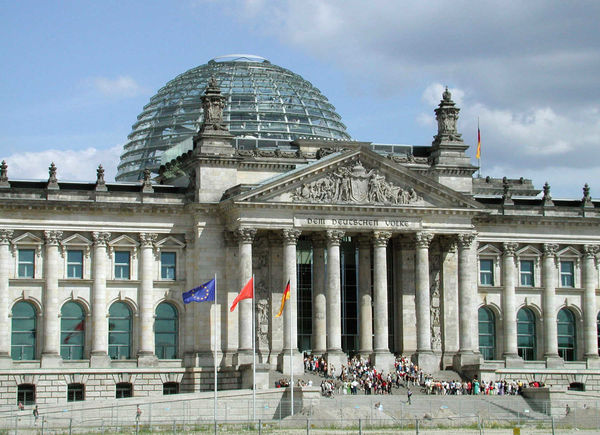Seeing History Unfold at Berlin’s Reichstag
By Rick Steves

Whenever I visit the Reichstag building in Berlin, I'm reminded of my visit in 1999, when it had recently reopened to the public following a nearly decade-long reconstruction in the wake of German reunification. For tourists unaware of the building's history, its restoration just meant another sight to check off their lists, its glass dome simply another vantage point to enjoy views of the city.
But a knowledge of the Reichstag's past gives a visit a far deeper meaning. It was in this building that the German Republic was proclaimed in 1918, officially putting an end to German monarchy. In 1933, this symbol of democracy nearly burned down. While the Nazis blamed a communist plot, some believe that Hitler himself planned the fire. Whatever the case, he used the fire as a convenient excuse to frame the communists and grab total power.
After 1945, this historic home of the German parliament — which saw some of the last fighting of World War II on its rooftop — stood as an abandoned and bombed-out hulk overlooking the no-man's-land between East and West Berlin. After reunification, Germany's government returned from Bonn to Berlin. And, in good European fashion, the Germans didn't bulldoze their former parliament building. While the building represented many painful aspects of German history, the reunited Germans respected the building's cultural roots and renovated it with extreme care.
They also capped it with a glorious new glass dome, incorporating modern architectural design into the late-19th-century icon, and opened it up to the people. Inside the dome, 50 yards above the ground, a cone of 360 mirrors reflects natural light into the legislative chamber below. Lit from inside at night, the dome gives Berlin a memorable nightlight — and a lantern celebrating good governance.
The Reichstag dome is a powerful architectural symbol. German citizens climb its long spiral ramp around the mirrored cone and look down, literally over the shoulders of their legislators, to see what's on their desks. Jerked around too much by their politicians in the past century, Germans are determined to keep a closer eye on them from now on. This dome is designed to let them do exactly that.
When the Reichstag first reopened, I climbed to the top of the dome and found myself surrounded by teary-eyed Germans. Anytime you're surrounded by teary-eyed Germans, something exceptional is going on. I noticed that most of those people were old enough to remember the difficult times after World War II, when their city lay in rubble. What an exciting moment for them: The opening of this grand building was the symbolic closing of a difficult chapter in the history of a great nation. No more division. No more communism. No more fascism. They had a united government entering a new century with a new capitol building, looking into a promising future.
It was a thrill to be there. I was caught up in it. As I looked around at the other tourists, it dawned on me that most of them didn't have a clue about what they were seeing. Many seemed not only unaware of the building's historical role, but also too preoccupied with the trivial concerns of a typical tourist's day to pick up on the emotion in the room — thereby missing a once-in-a-lifetime opportunity to celebrate this great moment with the German people. And it saddened me.
A lot of the tourist industry encourages a lighthearted approach to travel — its customers are looking to avoid serious matters on their vacation. And sure, carefree fun is great — beachgoing, shopping, and nightlife can be worthwhile parts of a rich trip. I enjoy it, too. But we shouldn't forget what makes for the most memorable and enriching travel: firsthand experiences that expand our outlook, enabling us to rise above the dumbed-down mindset enouraged by advertiser-driven infotainment to see the world as it is — and ourselves as citizens of it. Watching so many disengaged tourists miss a rare chance to witness history in the making, I recommitted myself, as a travel writer, to keep expecting and encouraging my audience to be interested in and engaged with perspective-broadening travel.
Years ago, when I got my history degree, I said to myself, "I'd better get a business degree, too, so I have some useful knowledge." But of course since then I've come to appreciate the value of historical insight. History is constantly speaking to us. With knowledge of the past, we can better appreciate the significance of what's happening today. Travel can let us experience our collective history like nothing else — and it's never been more important to understand it.

